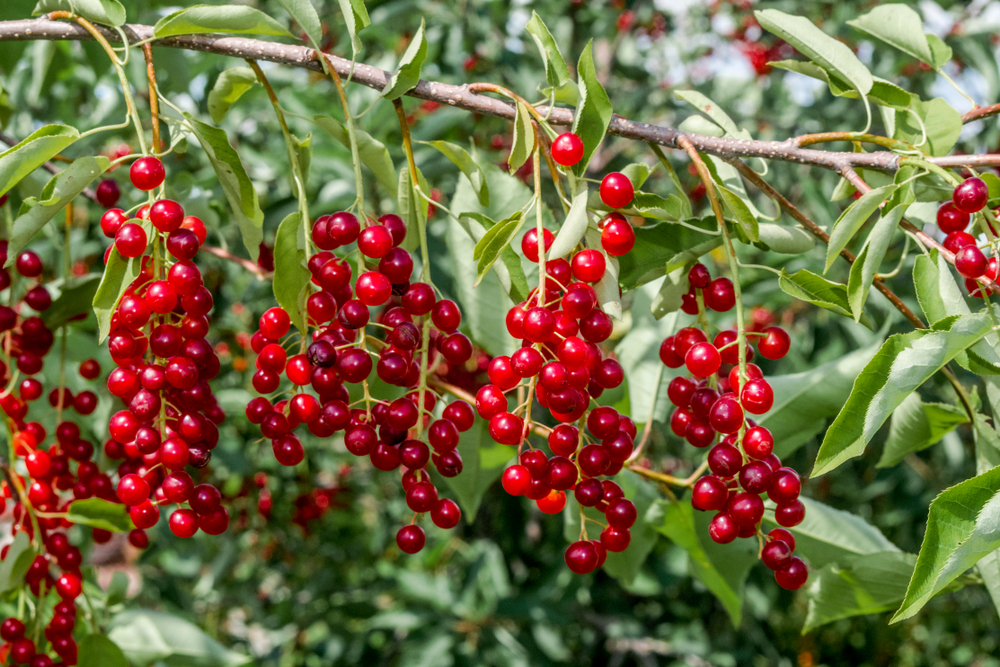High School Student Wins Science Fair – Proves Native American Recipe Kills Cancer Cells InVitro

In the heart of North America, where ancestral wisdom intertwines with modern science, an extraordinary story is unfolding. Destany “Sky” Pete, a young Native American student, dared to ask a question that bridges centuries of tradition and cutting-edge research: Could the humble chokecherry pudding, a cherished dish in her culture, hold the key to something much greater than nourishment?
Her journey from a small reservation to a competitive science fair is more than a tale of academic success—it’s a revelation about the powerful potential of traditional foods and their role in healing. What she discovered could change how we view the medicinal treasures hidden in nature, inspiring a deeper respect for the practices of those who came before us.
A Taste of Heritage and Healing
 Image source: Pexels
Image source: Pexels
Chokecherry pudding, a staple among the Shoshone and Paiute tribes, is more than a dish—it is a connection to ancestral heritage. Traditionally, the preparation involves crushing the entire berry, including the seeds, to create a nutrient-rich and flavorful pudding. However, modern adaptations often exclude the seeds, focusing solely on the juice, potentially losing some of the dish’s inherent benefits.
Community elders have noted a decline in the consumption of traditional foods like toishabui, correlating this shift with rising health challenges among tribe members. This perspective reflects the belief that ancestral diets, rooted in natural and unprocessed ingredients, hold solutions to contemporary health issues.
Beyond its nutritional value, chokecherry pudding serves as an emblem of cultural preservation. The preparation and sharing of this dish reinforce community bonds, ensuring the passing of traditions to future generations while honoring the wisdom of those who came before.
The Science Behind the Discovery
Destany “Sky” Pete’s journey into the medicinal potential of chokecherry pudding began with a hypothesis inspired by her cultural heritage: could the traditional preparation of toishabui, including crushed chokecherry seeds, inhibit cancer cell growth? To explore this, Pete collaborated with Dr. Ken Cornell, a biochemistry professor at Boise State University specializing in cancer cell research.
In their experiment, they prepared four different chokecherry specimens:
- Traditional chokecherry pudding with crushed seeds.
- Chokecherry pudding without seeds.
- Chokecherry juice alone.
- Chokecherry extract.
Each specimen was combined with uterine sarcoma cancer cells and incubated for 24 hours. The results were compelling: only the traditionally prepared chokecherry pudding with crushed seeds exhibited cancer-inhibiting properties. Pete observed, “It was the traditional preparation of toishabui with the crushed seeds that had the results.”
This finding suggests that compounds within the crushed seeds may be responsible for the observed anti-cancer effects. While the exact mechanisms remain to be fully elucidated, the study opens avenues for further research into the bioactive components of chokecherry seeds and their potential therapeutic applications.
Pete’s work garnered significant recognition. She was awarded the First Grand Prize at the 2017 Elko County Science Fair in Nevada, standing out among over 440 entries. This achievement earned her a $500 scholarship and accolades from organizations including the Navy and the Air Force. Additionally, her success qualified her for the Intel International Science Fair in Los Angeles, where she competed against approximately 1,800 high school students from over 75 countries.
Reflecting on her accomplishment, Pete expressed pride in representing her Native American heritage and emphasized the harmonious relationship between science and culture: “I’m proud to be Native American, and I want people to know that science and culture can be represented together.”
The Nutritional Powerhouse: Chokecherries
Nutritionally, chokecherries are rich in dietary fiber, aiding digestion and promoting gut health. They provide essential vitamins and minerals, including vitamin K, which plays a crucial role in blood clotting and bone health, and potassium, vital for maintaining healthy blood pressure levels.
A standout feature of chokecherries is their high concentration of antioxidants, particularly anthocyanins—the pigments responsible for their deep red to purplish-black hue. Anthocyanins have been studied for their anti-inflammatory and anti-carcinogenic properties. Research suggests that these compounds can combat oxidative stress, a factor linked to chronic diseases such as cancer and cardiovascular conditions.
Incorporating chokecherries into one’s diet may offer several health benefits:
- Anti-Inflammatory Effects: The antioxidants in chokecherries can help reduce inflammation, potentially lowering the risk of inflammatory diseases.
- Digestive Health: High fiber content supports healthy digestion and can alleviate digestive issues.
- Cardiovascular Support: Nutrients like potassium and anthocyanins contribute to heart health by regulating blood pressure and reducing oxidative stress.
It’s important to note that while the flesh of the chokecherry is nutritious, the seeds contain compounds that can release cyanide when metabolized. Traditional preparation methods, such as cooking the berries with crushed seeds in dishes like chokecherry pudding, mitigate this risk, rendering the dish safe for consumption. As Pete mentioned, “The traditional (Shoshone and Paiute) method of preparing chokecherry pudding includes the seed of the chokecherry, crushed up.” Modern adaptations often exclude the seeds, but traditional practices highlight their inclusion, possibly enhancing the dish’s health benefits.

Cancer-Fighting Potential of Chokecherries
Research into chokecherries reveals promising medicinal potential, particularly in combating cancer. Destany “Sky” Pete’s study explored the role of traditional preparation methods, specifically incorporating crushed chokecherry seeds, in inhibiting cancer cell growth. Her findings demonstrated that only the traditionally prepared chokecherry pudding with crushed seeds exhibited cancer-inhibiting properties when tested against uterine sarcoma cancer cells.
This aligns with broader research on anthocyanins, potent antioxidants found in berries, which have shown anti-inflammatory and anti-carcinogenic effects. Comparative studies suggest that chokecherries contain high levels of antioxidants and phenolic compounds like caffeic acid, known for their potential to combat oxidative stress and inhibit cancer progression.
Although these results are promising, much of the evidence remains limited to laboratory studies. Further research, including clinical trials, is essential to confirm the therapeutic applications of chokecherries. Pete’s work, however, underscores the intersection of traditional wisdom and modern science, inspiring future investigations into the medicinal power of Indigenous foods.
Reviving Tradition: Recipe and Risks
 Image source: Shutterstock
Image source: Shutterstock
Chokecherry pudding, or toishabui, is a traditional dish among the Shoshone and Paiute tribes, celebrated for its rich flavor and cultural significance. The traditional preparation involves using the entire chokecherry fruit, including the seeds, which are crushed to release their full essence. As Destany “Sky” Pete noted, “The traditional (Shoshone and Paiute) method of preparing chokecherry pudding includes the seed of the chokecherry, crushed up.”
Traditional Chokecherry Pudding Recipe:
- Harvest Fresh Chokecherries: Select ripe chokecherries directly from the tree.
- Clean the Berries: Rinse thoroughly to remove any debris.
- Crush the Berries and Seeds: On a hard surface or using a stone mortar, crush the entire berries along with their seeds. Some modern adaptations utilize a meat grinder for this purpose.
- Boil the Mixture: Place the crushed berry and seed mixture into a pot of boiling water. Boil until the water changes color, indicating the infusion of the chokecherry essence.
- Thicken the Pudding: Gradually add flour to the boiling mixture, stirring continuously until it reaches a runny pudding consistency.
- Sweeten to Taste: Add sugar as desired, stirring until fully dissolved.
- Cool and Serve: Remove from heat, allow the pudding to cool, and enjoy.
This recipe emphasizes the inclusion of crushed seeds, a practice that may enhance the dish’s health benefits. However, it’s crucial to address the potential risks associated with consuming chokecherry seeds.
Bridging Tradition and Innovation
Destany “Sky” Pete’s groundbreaking work serves as a testament to the enduring relevance of ancestral knowledge in today’s world. By proving that traditional chokecherry pudding holds cancer-inhibiting properties in vitro, she not only celebrated her cultural heritage but also showcased the potential of Indigenous practices to inform modern health solutions. Her success underscores the critical need to explore and respect the medicinal treasures embedded in nature, particularly those long utilized by Indigenous communities.
This story is more than just about science; it’s a narrative of connection—between the past and the present, tradition and innovation, and culture and progress. As we move forward, let Pete’s journey inspire deeper exploration into the natural remedies that surround us and foster a more inclusive approach to scientific discovery. By honoring our roots, we pave the way for a healthier, more harmonious future.
Featured image source: Shutterstock
Loading...






